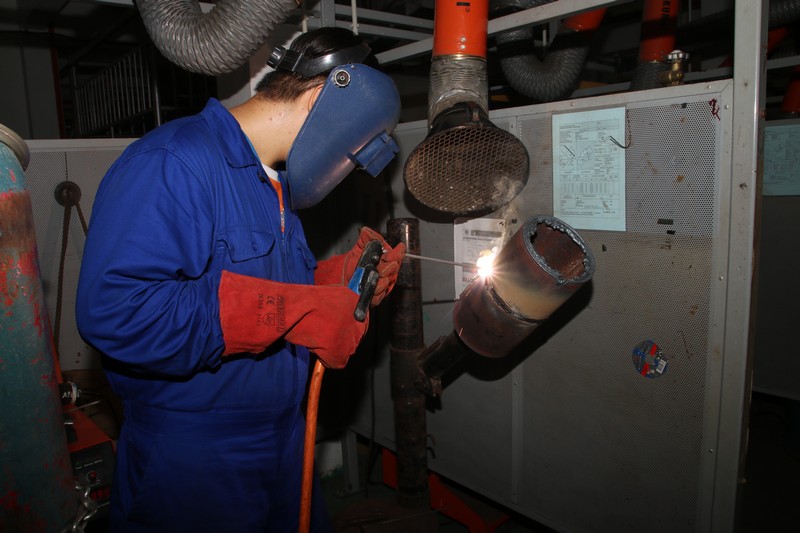In Sarawak, the three top work sectors that contributes to occupational deaths or fatalities are the manufacturing, construction and agriculture sector.
This was mentioned by Director of Department of Occupational Safety and Health (DOSH) Sarawak, Ir. Dr. Nor Halim bin Hasan.
“There are other occupational death incidents that happens in other sectors such as mining and quarrying sector, but these three are the top occurrence of workplace related deaths reported to DOSH in Sarawak,” he said.

Below are the statistic of occupational accidents and deaths from year 2019 to 2020;
| 2019 | 2020 | 2021 | |
| Death | 32 | 28 | 22 |
| PD | 28 | 19 | 19 |
| NPD | 410 | 381 | 325 |
Legend: PD – Permanent disability; NPD – Non permanent disability (Source: International Policy and Research Development Division)
Occupational accident rate:
- Target for 2020: 2.53 per 1000 workers
- Sarawak target for 2020: 1.75 per 1000 workers
- Target for OSHM25: 2.13 per 1000 workers
Occupational death rate:
- Target for 2020: 4.36 per 100,000 workers
- Sarawak target for 2020: 2.85 per 100,000 workers
- Target for OSHM25: 2.93 per 100,000 workers
(Source: DOSH)

As of this year, Dr. Nor Halim said that there are seven reported occupational fatalities.
Elaborating more, he explained that the cause of deaths in the manufacturing and construction sectors are often due to fall-related accidents among workers.
“In the construction sector, this type of accidents usually takes place during the construction of high-rise buildings. The workers may be wearing safety gears such as helmets but, unfortunately, they do not wear their safety harness properly, thus leading to fall accidents,” he said.

In manufacturing sectors, he explained that the workplace deaths would happen when the workers have to handle heavy machineries without proper safety guidelines.
On the agriculture sector, Dr. Nor Halim noted that such unfortunate accidents usually happened to new workers who are not familiar in handling heavy machines such as tractors.

In the effort to increase the level of occupational safety and health nationwide, DOSH has developed the Occupational Safety and Health Master Plan 2021-2025 (OSHMP25).
Launched by the Prime Minister on 13 October 2021, OSHMP25 outlines the numerous strategic core values to develop a healthy and safe work culture, and to raise this country’s well-being index (MyWI).
The seven key strategies of OSHMP25 are;
- Empowering the occupational safety and health (OSH) in the public sector
- Strengthening self-regulation practice at the workplace
- Encouraging OSH education and research
- Empowering occupational health
- Better OSH compliance in small and medium industries
- Boosting OSH through technology
- Improving OSH on work-related road safety, informal sector and future jobs
With such a management system, Dr. Nor Halim noted that it could help raise awareness on the occupational safety and health among vendors, sub-contractors and suppliers in adopting and complying with OSHA regulations.

Occupational Accident Statistics by Sector until March 2022 (reported to DOSH only)
| Sector | NPD | PD | Death | Total |
| Hotel and restaurant | 20 | 1 | 0 | 21 |
| Utilities (electricity, gas, water and sanitary service) | 64 | 0 | 3 | 67 |
| Finance, insurance, real estate and business services | 80 | 1 | 3 | 84 |
| Construction | 34 | 1 | 16 | 51 |
| Transport, storage and communication | 60 | 0 | 3 | 63 |
| Manufacturing | 1065 | 41 | 16 | 1122 |
| Wholesale and retail trade | 24 | 0 | 0 | 24 |
| Public services and statutory authorities | 19 | 1 | 0 | 20 |
| Mining and quarrying | 5 | 1 | 2 | 8 |
| Agriculture, forestry and fishery | 230 | 8 | 5 | 243 |
| TOTAL | 1601 | 54 | 48 | 1703 |
Legend: PD – Permanent disability; NPD – Non permanent disability (Source: International Policy and Research Development Division)





